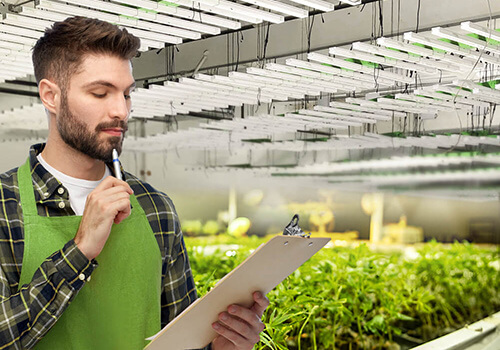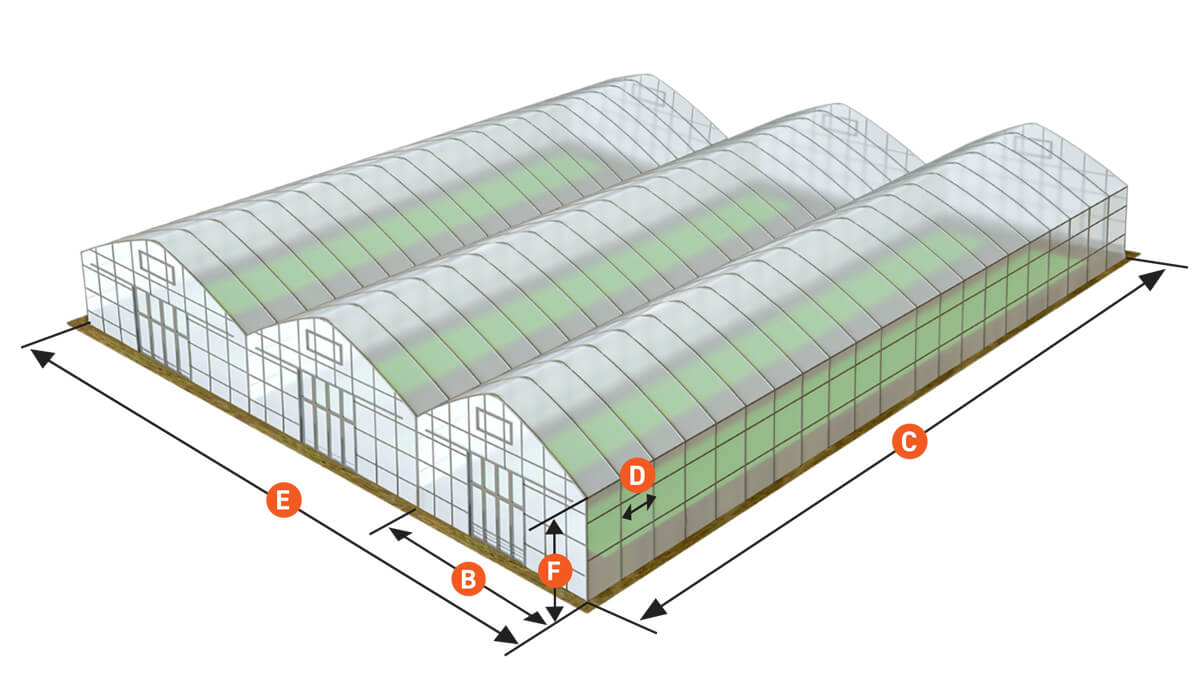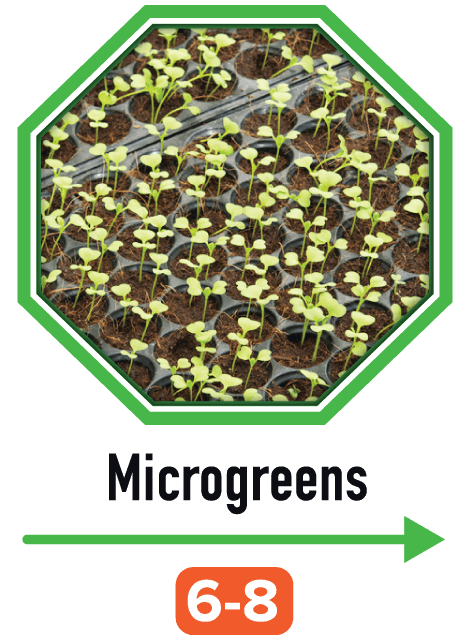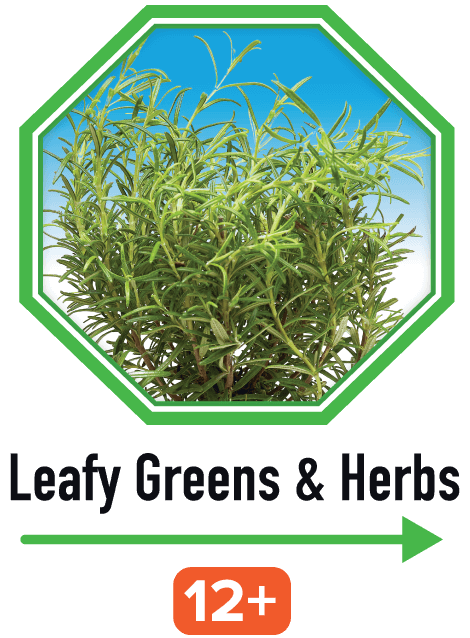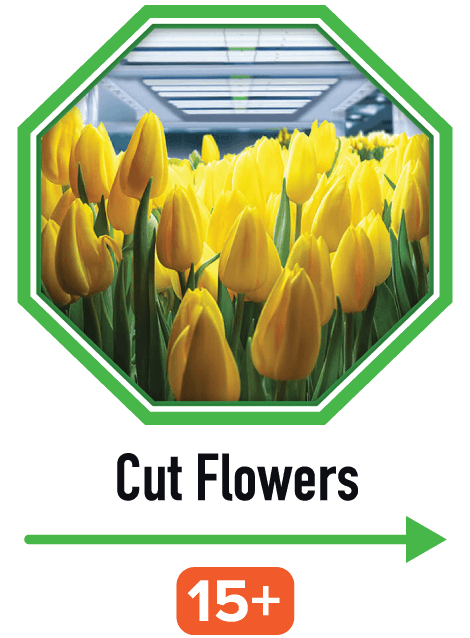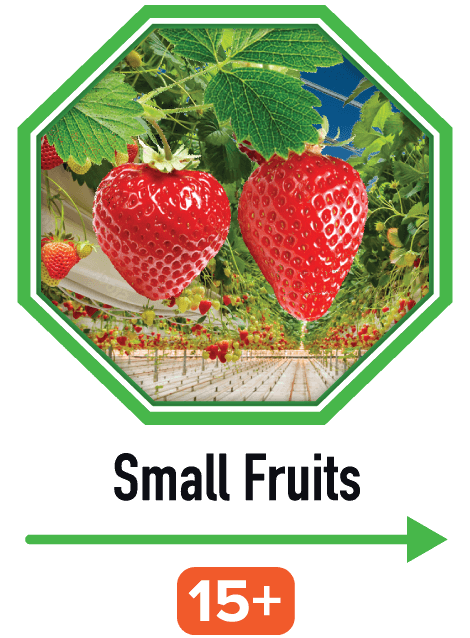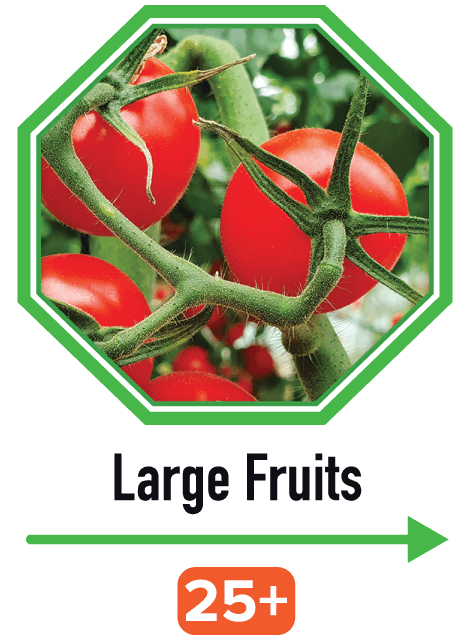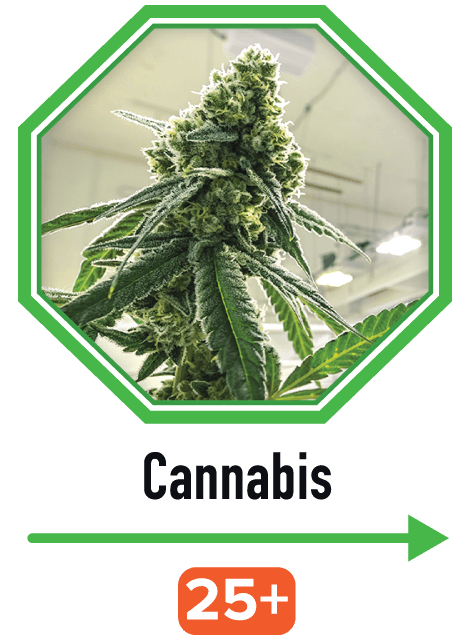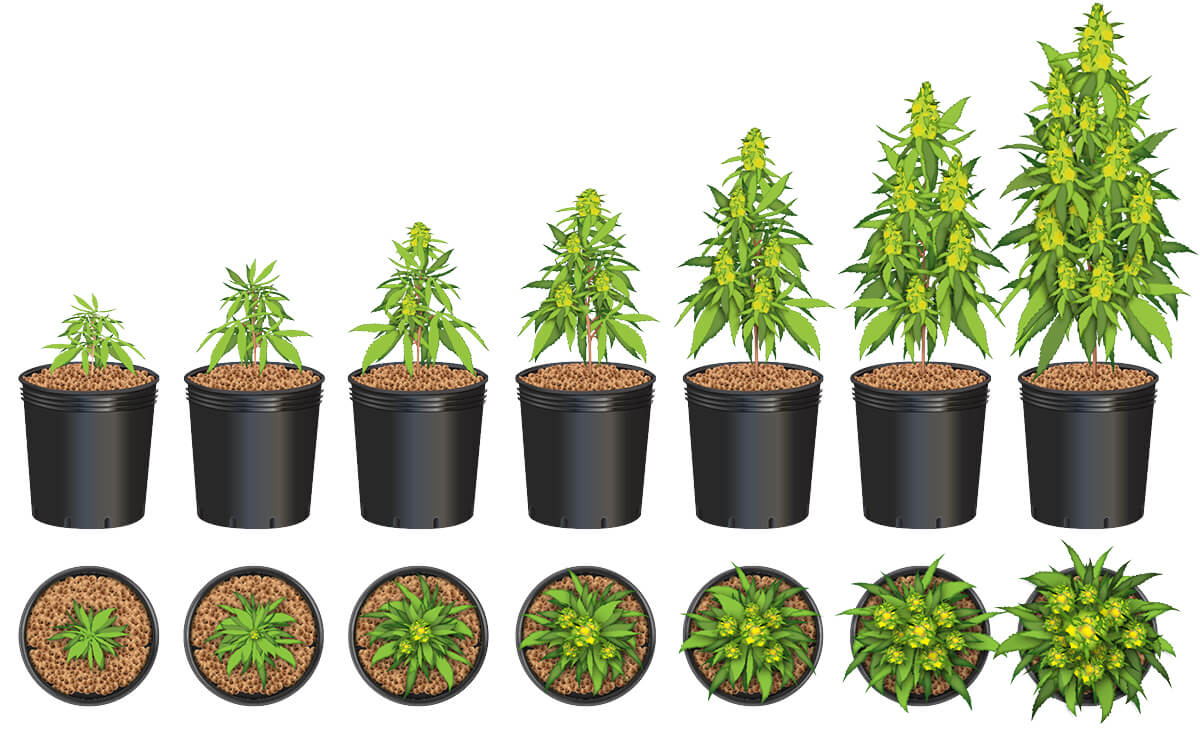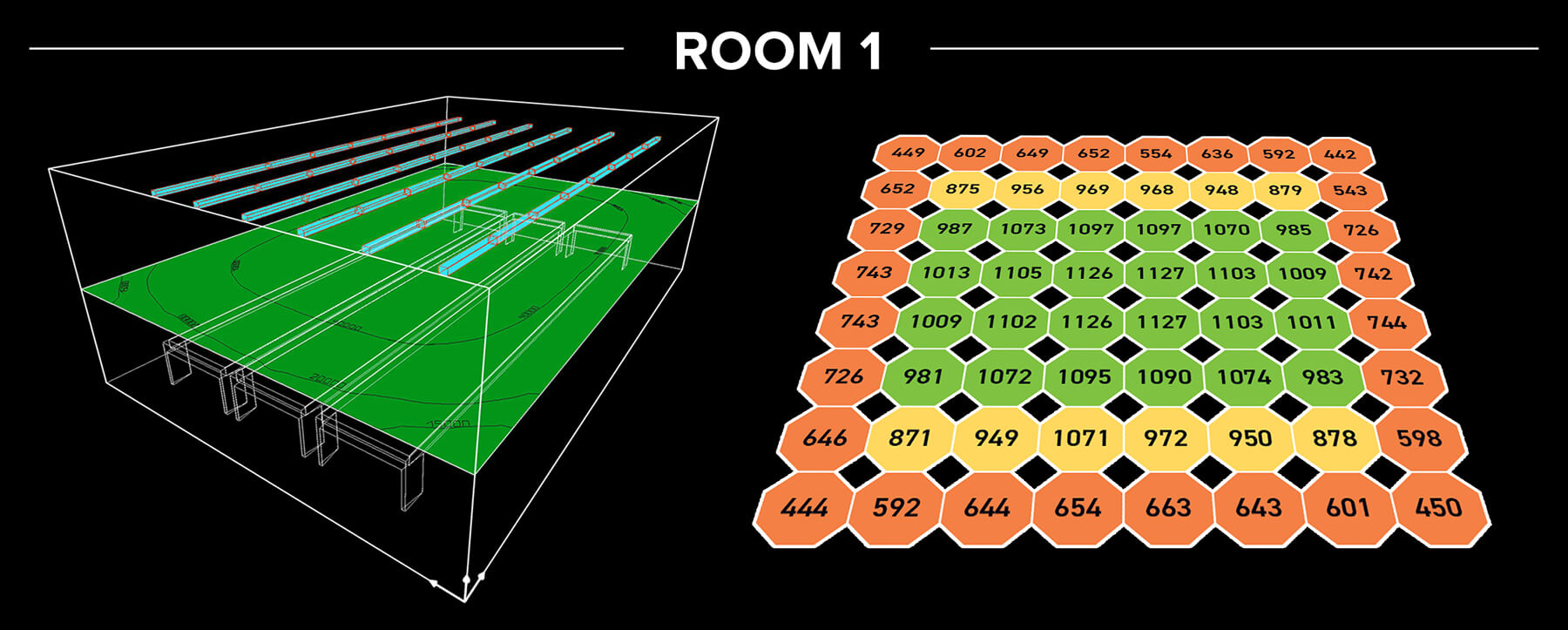How Many Grow Lights Do I Need?
How many grow lights do you really need? Simple. You need the correct number of plant grow light fixtures for optimal plant growth using the least electrical power.
The amount of light that does not land on a plant is a waste of resources. It will not be used for photosynthesis. Likewise, the amount of light touching the plants but beyond what they can efficiently use is also wasted. So how can you get the best results from your LED grow lights?
Grow Room Light Planning and Light Maps
Grow Elite's experienced team uses 3-D simulation light planning (or "Lightmapping") software. This helps accurately estimate the number of LED plant grow lighting fixtures you need.
This is a crucial resource for avoiding under or over-estimating your lighting needs. We can build a plan to address:
- The plant's life stage.
- The growing medium and method.
- Room obstructions.
Plant DLI – the Daily Light Integral
The amount of light a plant can process into photosynthesis over 24hrs is called the Daily Light Integral (DLI). The DLI is the number of mol/m-2/day required for maximum plant growth rate. So, a plant's DLI is essential for determining the total daily PPFD (Photosynthetic Photon Flux Density) it needs for optimal growth.
Why are the PPFD requirements necessary? Knowing the amount of light your plants need, gives you the base for the number of plant grow light fixtures required.
For instance, Low-light plants like lettuce have a DLI below 14. On the other hand, higher-light crops like tomatoes have a DLI as high as 30 during flowering. And extremely higher-light, PAR thirsty cannabis plant requirements can exceed a DLI of 50.
Considering the daily lighting needs of your crop ensures you have all the light needed for production. Grow Elite's planners will work with you to determine the best lighting solution for your crop's DLI needs.
Your Crops Growth Stage
Your crop's lighting need, their DLI, changes with their growth stage. The number of LED grow light fixtures you need and what features to include are tied to the growth stage.
Do your plants grow from seed to harvest in the same spot? Then you need the grow light fixture's maximum light output to match the peak growth requirements. You also need a dimmable plant lighting system. It will stop your crop from getting too much light in its early growth stages.
Is your crop production separated by growth stage? Such as seedling, vegetative, and fruiting? Each of these areas will have very different lighting requirements.
Keeping your production method and the crop's growth stage in mind is another factor that can reduce overhead costs and production risks. Grow Elite's lighting planners will assist you in planning the best LED grow lighting solution.
The growing medium and method: Hydroponics, Aquaponics, Soil, Aeroponics, etc.
The growing medium and the method used to grow your crop strongly influence the plant's growth rate. For example, using a recirculating deep water culture (RDWC) system will grow plants much quicker than growing them in soil. Plants that grow quickly require higher amounts of PAR lighting for photosynthesis.
Adding CO2 to the plant growing environment is another way to increase a crop's yield at harvest. Elevated CO2 speeds the plant's rate of photosynthesis. However, unless the PPFD is adjusted to compensate, the added CO2 is a wasted investment.
And that adjustment for CO2 works both ways. Without supplemental CO2 and a controlled environment, high-powered grow lights are a waste of money and electricity.
Room obstructions
A good lighting plan will compensate for shadows and obstructions. It should be built around the growing environment. It must consider the electrical capabilities of the facility. And it must be within budget.
At Grow Elite, we use professional lighting design software to ensure total and efficient coverage of your crop. In addition, our experienced team works with you to address the harvest quality, crop yield, and the balance between production costs and profitability.

